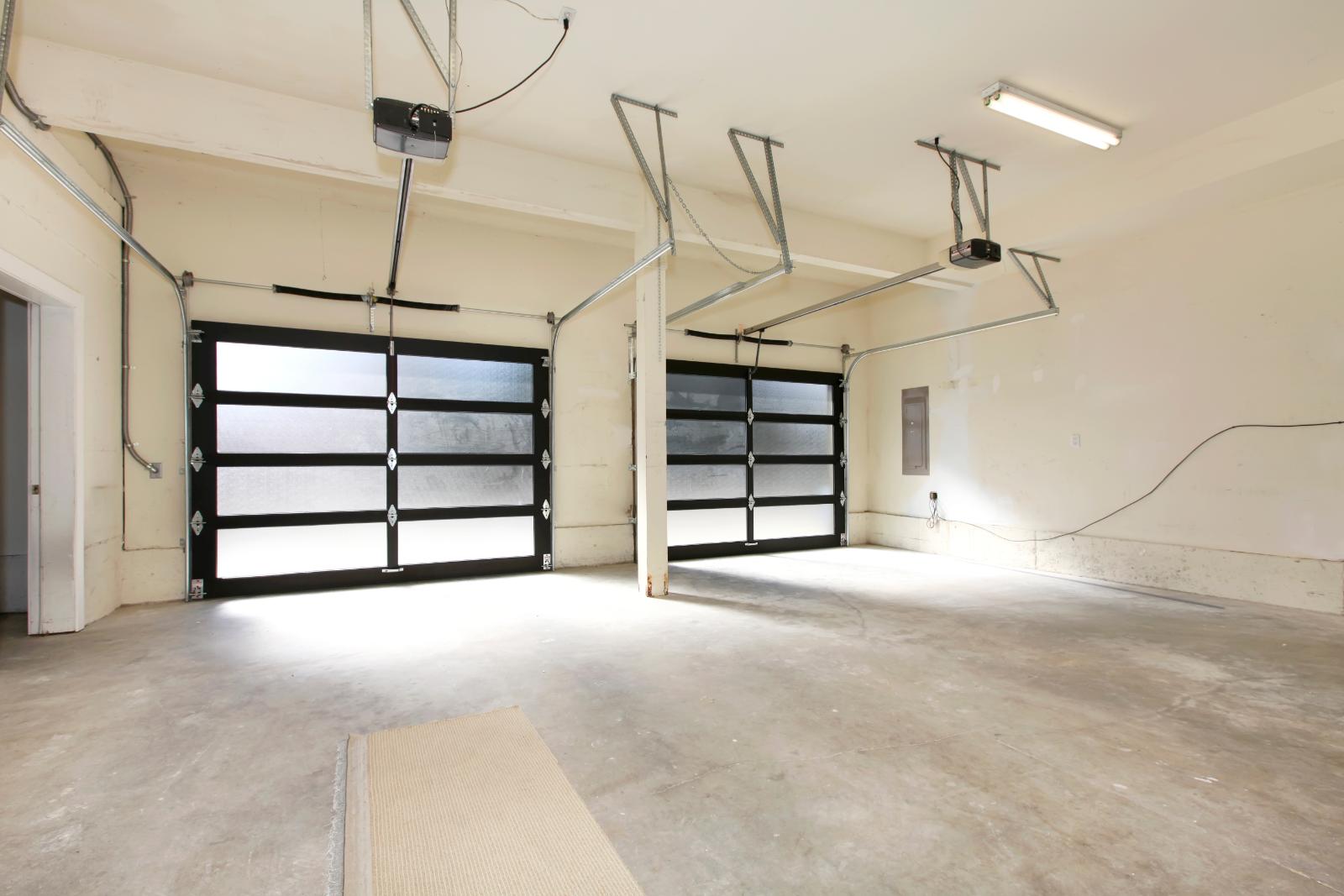
Contents
When installing a garage door opener in Grand Rapids, measure accurately and clear out clutter for a perfect fit. Opt for power options and security features that align with your needs. Make sure you have all the necessary tools handy, and prepare your garage door by cleaning and lubricating moving parts. Follow the manufacturer’s instructions closely when mounting it securely. Regularly test for functionality, replace batteries, and maintain moving parts. Remember, proper maintenance benefits safety and extends the lifespan of your opener. Seek expert advice for professional installation to save time and increase property value.
Key Takeaways
- Measure garage dimensions accurately for proper opener fit.
- Choose an opener with suitable power and security features.
- Gather the necessary tools for a smooth installation process.
- Follow the manufacturer’s instructions for correct mounting.
- Test the opener regularly and perform maintenance for longevity.
Assessing Your Garage Space
Before commencing the installation process, assess your garage space to confirm that it meets the necessary requirements for a smooth setup. Begin by measuring dimensions accurately. Take note of the height, width, and depth of your garage to guarantee that the garage door opener you choose fits perfectly without any issues. By measuring the space accurately, you can avoid any unexpected complications during the installation process.
Moreover, consider your storage solutions within the garage. Make sure there’s ample space around where the garage door opener will be installed. Clear out any clutter or unnecessary items to establish a safe and organized environment for the installation. This won’t only facilitate the setup but will also provide a clean and functional space for your garage activities.
Choosing the Right Opener
When selecting the right garage door opener, consider the power options available and the security features that best suit your needs. These two key points will help you make an informed decision that aligns with your preferences and requirements.
Take your time to evaluate which opener features will provide the functionality and peace of mind you desire.
Opener Power Options
Consider the power options available when selecting the right garage door opener for your needs. Guarantee compatibility with your home’s power sources.
Some openers come with battery backup features, providing peace of mind during power outages. If you’re environmentally conscious or looking for a sustainable option, explore models that are compatible with solar panels.
Battery backup systems can be a lifesaver in emergencies, allowing you to operate your garage door even when the power is out. Solar panels offer a green alternative, harnessing the power of the sun to keep your opener running efficiently.
Evaluate your priorities and choose the power option that aligns best with your lifestyle and values.
Opener Security Features
Improve the security of your garage by selecting an opener with advanced security features. When selecting a garage door opener, search for models that offer remote access, allowing you to monitor and control your garage door from anywhere. This feature adds convenience and peace of mind, especially when you’re away from home.
Additionally, prioritize cybersecurity measures in your opener selection to safeguard against potential hacking or unauthorized access to your garage. Confirm that the opener you choose employs robust encryption protocols and secure authentication methods to prevent any security breaches.
Gathering Necessary Tools
Before starting, make sure you have all the essential tools readily available for the garage door opener installation. To guarantee a smooth and efficient process, gather the necessary items before starting the installation. To begin with, you’ll need a power source for your garage door opener. This includes a power drill with a charged battery or an extension cord to reach the nearest outlet. Having a reliable power source is essential for testing your opener once it’s installed.
Next, make sure you have the remote control that comes with your garage door opener. This remote will allow you to open and close the garage door with ease from a distance. Keep it handy during the installation process, as you may need to test the opener multiple times to make sure it’s functioning correctly. Having the remote control nearby will save you time and effort as you set up your new opener.
In addition to these key items, gather any screws, bolts, or brackets that are included with your garage door opener kit. Having everything organized and within reach will streamline the installation process and prevent any unnecessary delays. By preparing all the necessary tools beforehand, you’ll be well-equipped to tackle the garage door opener installation with confidence and efficiency.
Preparing the Garage Door
Examining the garage door for any preexisting damage or obstructions is vital before moving forward with the installation of the opener. Start by giving your garage door a thorough inspection. Look for any dents, rust, or misalignments that could impact the installation process. It’s important to address these issues before proceeding to guarantee smooth operation of your new opener.
Once you’ve checked for any damage, the next step is to clean the garage door. Use a mild detergent and water to remove dirt, grime, and debris that may have accumulated over time. A clean surface won’t only make the installation easier but also help prevent any unnecessary wear and tear on your new opener.
After cleaning, consider lubricating the moving parts of the garage door. Apply a silicone-based lubricant to the hinges, rollers, and springs to ensure they move smoothly. This simple step can extend the life of your garage door and reduce noise during operation.
Mounting the Opener
Now it’s time to position the opener and attach the brackets securely to get your garage door system up and running smoothly.
Make sure to follow the manufacturer’s instructions closely for proper placement and alignment.
This step is vital for the overall functionality and safety of your garage door opener.
Positioning the Opener
To properly position the garage door opener, make sure that the mounting bracket is securely attached to the ceiling or wall. This step is essential for ensuring the stability and functionality of your opener.
Before mounting, confirm that the power source is easily accessible for installation. Additionally, take into consideration the placement of safety sensors, making sure they align correctly with the garage door.
Proper positioning not only ensures smooth operation but also enhances the safety features of your garage door opener. By securely mounting the opener and considering the power source and safety sensor placement, you’re taking important steps toward a successful installation.
Attaching the Brackets
For a secure installation of your garage door opener, start by attaching the brackets to the designated mounting area. Confirm proper bracket alignment to ensure the smooth operation of your garage door.
Make sure to use the recommended screws for installation to enhance bracket strength and stability. Check the motor compatibility with the brackets to avoid any future issues or malfunctions.
Securely fasten the brackets to the ceiling or wall, following the manufacturer’s instructions carefully. By correctly attaching the brackets, you aren’t only ensuring the safety of your garage door opener but also increasing its longevity.
Take your time during this step to ensure a reliable and durable mounting for your garage door opener.
Testing and Maintenance
Make sure that your garage door opener is tested regularly and maintained to prolong its lifespan. Regular testing guarantees that your opener is functioning correctly and helps catch any issues early on. Start by checking the remote control for proper functionality. If you notice any problems like a weak signal or unresponsiveness, try replacing the batteries or reprogramming the remote. Remote troubleshooting is often a quick fix that can save you time and money.
Another vital aspect of garage door opener maintenance is sensor alignment. The sensors prevent the door from closing on objects or people in its path. To test the sensors, close the door and wave an object in front of them. If the door doesn’t reverse immediately, your sensors may be misaligned. Adjust them until the door reverses as soon as an object obstructs the sensors’ path.
In addition to these regular tests, lubricate the opener’s moving parts every few months to keep it running smoothly. Use a silicone-based lubricant on the chain or screw of the opener. It’s also essential to check the opener’s hardware for any loose bolts or screws that may need tightening. By performing these simple maintenance tasks, you can ensure your garage door opener operates safely and efficiently for years to come.
Recap
You’ve successfully navigated the ins and outs of setting up your garage door opener in Grand Rapids. With a little bit of elbow grease and some expertise, you’ve guaranteed your garage is now equipped with a reliable and efficient opener.
So, go ahead and pat yourself on the back for a job well done – you’re now the proud owner of a smoothly functioning garage door system.
Happy opening and closing!
Recent Posts
Why Replace Your Garage Door Opener?
Your garage door opener plays an essential role in your home’s safety and convenience. If
3 Tips for Replacing Your Garage Door Opener
When it’s time to replace your garage door opener, you’ll want to make certain you’re
10 Best Steps for Replacing Your Garage Door Opener
Replacing your garage door opener is a task that can feel as intimidating as building

